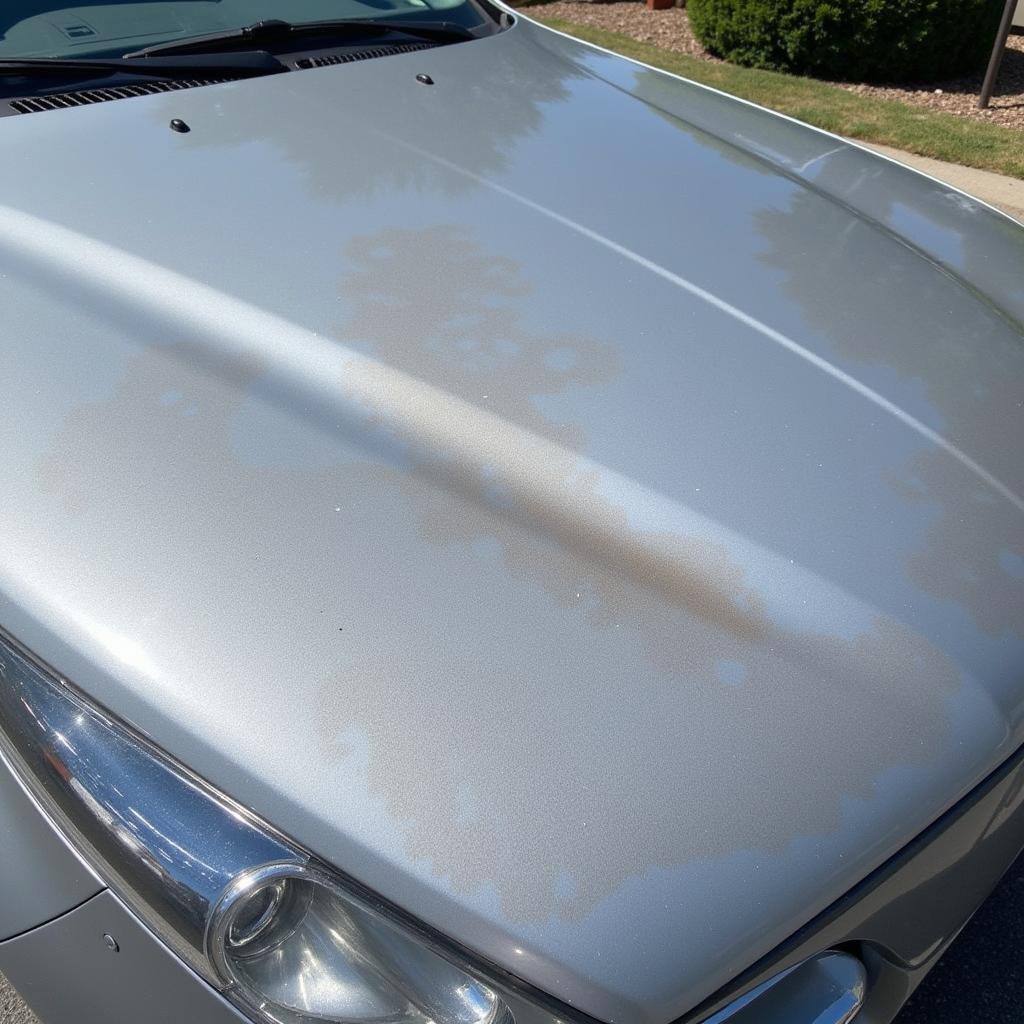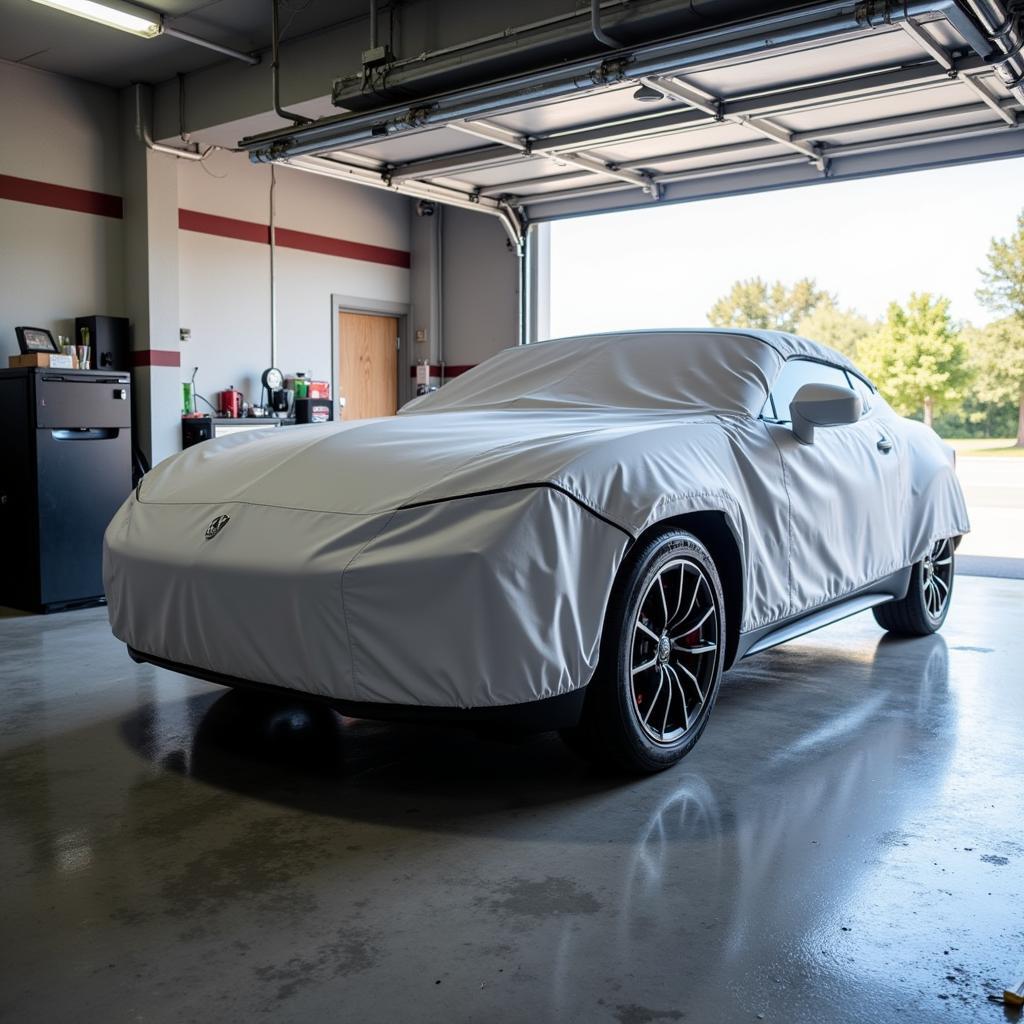Fixing Clear Coat Car issues is a common concern for many car owners. Whether it’s minor scratches, swirling, or more serious peeling, understanding the causes and solutions can save you time and money. This guide provides expert advice and practical steps for addressing clear coat problems, from DIY fixes to professional repairs.
Understanding Clear Coat and Its Importance
Clear coat is the protective layer applied over your car’s base coat, shielding it from UV rays, environmental contaminants, and minor abrasions. It’s what gives your car that glossy shine. Over time, this layer can deteriorate, leading to a dull, faded, or even damaged appearance.
Common Clear Coat Problems and Their Causes
Several factors can contribute to clear coat damage:
- UV Exposure: Prolonged exposure to sunlight can cause the clear coat to oxidize and fade.
- Environmental Contaminants: Acid rain, bird droppings, tree sap, and industrial fallout can etch the clear coat.
- Improper Washing Techniques: Using harsh detergents or abrasive materials can scratch the clear coat.
- Minor Scratches and Swirls: These can result from improper washing, or even just everyday wear and tear.
- Peeling Clear Coat: This is a more serious issue, often caused by poor factory application or severe environmental damage.
 Clear coat damage from UV exposure
Clear coat damage from UV exposure
DIY Fixes for Minor Clear Coat Issues
For minor scratches and swirling, you can often achieve good results with DIY solutions:
- Wash and Dry the Car Thoroughly: Ensure the surface is clean and free of debris before starting any repair work.
- Assess the Damage: Determine the severity of the scratches or swirls to choose the appropriate method.
- Use a Clear Coat Scratch Remover: Apply a small amount of product onto a microfiber cloth and gently rub it onto the affected area using circular motions.
- Buff the Area: After the scratch remover has dried, use a clean microfiber cloth to buff the area to a shine.
When to Seek Professional Help
For more serious clear coat problems, such as peeling or extensive damage, it’s best to consult a professional. They have the expertise and equipment to properly assess the damage and recommend the best course of action, which may involve repainting the affected area.
Professional Clear Coat Repair Options
Professional repair options typically involve:
- Clear Coat Restoration: This involves removing the damaged clear coat and applying a new layer.
- Spot Repair: For localized damage, a spot repair can be done to address the specific area.
- Full Repaint: In cases of severe damage, a full repaint may be necessary.
“For extensive clear coat damage, a professional assessment is crucial,” says automotive expert, John Miller. “They can determine the best approach, whether it’s restoration or a full repaint, ensuring a long-lasting solution.”
Preventing Clear Coat Damage
Preventing clear coat damage is easier than fixing it. Here are some proactive steps:
- Regular Washing and Waxing: Washing your car regularly with a quality car wash soap and waxing it every few months will protect the clear coat.
- Parking in Shade: Whenever possible, park your car in the shade to minimize UV exposure.
- Using a Car Cover: A car cover can provide excellent protection from the elements.
- Promptly Removing Contaminants: Clean bird droppings, tree sap, and other contaminants as soon as possible to prevent them from etching the clear coat.
 Preventing clear coat damage
Preventing clear coat damage
Conclusion
Fixing clear coat car problems requires a careful approach, from identifying the cause to choosing the right solution. Whether you opt for a DIY fix or seek professional help, understanding the process can help you restore your car’s shine and protect its value. For personalized guidance and assistance, connect with AutoTipPro at +1 (641) 206-8880 or visit our office at 500 N St Mary’s St, San Antonio, TX 78205, United States. “Protecting your car’s clear coat is an investment in its long-term appearance and value,” adds Maria Sanchez, a seasoned auto detailer.
“Remember, addressing clear coat issues early can prevent more serious problems down the line,” concludes John Miller.
FAQ
-
How often should I wax my car to protect the clear coat? Waxing every three to six months is generally recommended.
-
Can I use household cleaners on my car’s clear coat? No, household cleaners can damage the clear coat. Use a car wash soap specifically designed for automotive use.
-
How can I tell if my clear coat is damaged? Signs of clear coat damage include fading, dullness, peeling, and visible scratches or swirls.
-
Is it possible to fix peeling clear coat myself? While minor peeling can sometimes be addressed with DIY methods, extensive peeling usually requires professional repair.
-
How much does it cost to fix clear coat damage professionally? The cost varies depending on the severity of the damage and the chosen repair method. Consult a professional for a personalized quote.
-
What is the best way to remove bird droppings from my car’s clear coat? Rinse the area with water and use a microfiber cloth to gently wipe away the droppings. If necessary, use a dedicated bird dropping remover.
-
Can clear coat be repaired without repainting the entire car? Yes, in many cases, spot repairs or clear coat restoration can be done without requiring a full repaint.




Leave a Reply